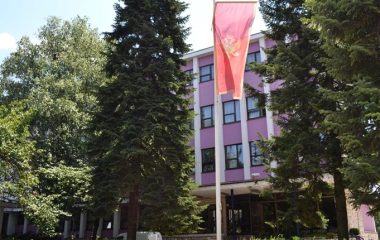
Željko Đurišić (photo: private archive)
Share
Which energy sources should Serbia rely on? How to secure energy independence and affordable prices for domestic consumers? How can the construction of wind parks and solar power plants be accelerated? How to obtain enough energy for balancing? In an interview with Balkan Green Energy News, Professor Željko Đurišić from the School of Electrical Engineering at the University of Belgrade revealed his stance on the main issues affecting the energy sector – not only in Serbia.
Serbia must turn to energy from wind, the Sun and water to secure energy independence as coal quality is getting worse and worse and a significant part of its reserves has been depleted, Željko Đurišić insists. He proposed a new auction model that would unlock investments in wind parks and solar power plants and secure electricity at affordable prices for domestic consumers.
The main strategic orientation in medium- and long-term planning of electricity production in Serbia should be to maintain energy independence, Đurišić says.
The first precondition is to plan power plants that use sources that aren’t imported – solar and wind energy. The unused potential of major rivers, primarily the Drina, Morava, Ibar and Lim, should be utilized to the maximum, in his view. Coal, he adds, is a resource that we practically exhausted and we cannot count on it in the long term.
The second one is that new power plants secure a production profile that can meet the needs of producers in the country. “In that sense it is important to plan for an optimal production mix of photovoltaic and wind power plants and to build the capacities for balancing the production forecast error and the difference in power production and consumption,” he pointed out.
The third precondition is for each new wind park or photovoltaic plant to be in the guaranteed supply system. Đurišić noted that state-owned power utility Elektroprivreda Srbije (EPS) is obligated to secure electricity for consumers in Serbia at regulated prices and stressed that as coal-fired thermal power plants are shut down in the decarbonization process, the company would lose the production potential to meet the obligation.
“If renewable electricity plants that are being developed by private investors don’t become participants in the guaranteed supply system, it would inevitably lead to a jump in electricity prices for households and the industry as the guaranteed supplier would have to turn to the market to buy the energy that it lacks. That is why guaranteed supply must be secured and directly guaranteed from the national production capacities instead from the global electricity market,” he asserted.
The large pressure from investors in the development of wind power and photovoltaic plants resulted in transmission system operator Elektromreža Srbije (EMS) halting the production of the studies for connection due to its inability to accommodate all the plants in the system. Greece and Croatia had similar issues. How do you see the way out of the situation?
Yes, EMS is indeed swamped with applications for studies for connection. Wind power and photovoltaic plants of almost 15,000 MW in total have applied for connection conditions. It is impossible to process the applications for such a capacity without forming a priority list of projects.
On the other hand, the energy deficit issue makes it necessary to build and integrate renewable energy in the electric power system of Serbia as soon as possible. To solve the problem it is essential to replace the current auction model for market premiums with auctions for access to the transmission system and to switch the balancing responsibility to production capacities.
How can that be carried out in a regulatory and technical sense?
EMS would define the overall installed power of wind and solar power plants that it can accommodate in the system for a particular target year of the plants’ commissioning, taking into account an optimal mix of installed power of solar and wind power plants.
The Ministry of Mining and Energy would issue calls for auctions for awarding capacity for the connections to the electric power system for a current targeted period for each area. Every potential investor would offer a certain percentage of the energy produced that it is ready to place at disposal for guaranteed supply over the entire period of the plant’s use.
What would be the price of that electricity?
The price of this energy would be regulated, that is to say determined by the government under existing mechanisms for setting the price for guaranteed supply. Priority lists would be formed for every area in accordance with the value of the bid for participation in regulated supply.
Projects in attractive regions would, due to strong competition, have to allocate a greater share of energy to guaranteed supply, which would boost interest in less windy areas, and geographic dispersion of power plants would thus be achieved.
If 4,000 MW in wind power plants and 3,000 MW in solar power plants would be built by 2030 and on the transmission network, and if we suppose that, on average, 25% of the capacity of these power plants is in the guaranteed supply system, the country would get more than 3.5 TWh of electricity per year, which is around 10% of consumption.
The guaranteed supplier, EPS, would buy this energy from private power plant owners at a regulated price and sell it to households and the industry at a guaranteed price.
This way the government could keep electricity prices lower and it would save significant funds that it could direct to transmission network development and the construction of balancing capacities, which would progressively lead to the installation of new renewable energy capacities. Additionally, it would enable access to the transmission grid for the plant owners and leave them with a significant margin to achieve profits in the free market, so they would also be in their interest to support such a regulatory framework.
What about balancing energy or balancing services, which are referred to as the main obstacle to the integration of renewables? Critics say Serbia has no capacities for balancing for wind parks and solar power plants and that balancing in that segment is very expensive.
First and foremost we need to make a distinction between balancing the production forecast error and balancing the difference in power production and consumption, which are often mistakenly equated, even in professional circles.
To balance power plants means to match a plant’s current generation with the production plan. It is the compensation for the deviation in the forecasted power plant production.
Balancing the difference in power production and consumption is covering the difference between the production profile of power plants in a system and the consumption profile in that system. It can be carried out through imports and exports to the extent that is possible with regard to cross-border capacities, but that way the system’s energy independence is lowered to an extent.
So we need systems to store energy on a seasonal basis. They capture energy when we have it in excess, for instance during spring and summer, and deliver it to the system when we lack energy, like in winter. That is the only way we can be energy independent.
How much balancing energy is actually necessary to balance wind and solar power plants in Serbia?
The existing wind power plants in the Banat area have a total average annual forecast deviation, for one day ahead at an hourly level, of about 8% of their overall installed power. The deviation is above 25% for about 500 hours of one year. It is higher than the average deviation for wind power plants in Europe and the region.
The existing wind power plants in Serbia are concentrated in a relatively small area, which means they use the same wind, so their deviations are algebraically combined, which is the main reason for a higher deviation. Besides, wind power plants in Serbia aren’t motivated to invest in the improvement of the production forecasting system, as they bear no balancing responsibility.
Spatial dispersion of renewables, both wind power and photovoltaic plants, and improving the production forecasting system are crucial for reducing the balancing deviation.
The School of Electrical Engineering is part of the team assessing the necessary size of balancing capacities?
Yes. The consortium comprising the School of Electrical Engineering in Belgrade, the Nikola Tesla Institute and Energoprojekt-Entel was hired by EPS to produce a study on the estimated necessary balancing capacities and the cost of balancing the expected renewable energy sources in Serbia. The official results will be available when the study is completed, early next year. At the moment I can provide an estimate for the necessary capacities in general.
It is fair to say that the necessary installed power in balancing capacities is around 14% of the installed power of aggregated renewable energy.
For example, if there was 4,000 MW in wind power plants and 3,000 MW in solar power plants in 2030, it would require around ±1.000 MW of installed capacity for balancing, of which spinning reserve should make up about ±20% of the capacity.
The power and energy for balancing must become market categories, which means everyone would be allowed to build balancing capacities and conduct balancing services, so that the construction of these capacities would be economically justifiable. All power plants must have balancing responsibility and the legal framework must be changed in that segment.









Be the first one to comment on this article.